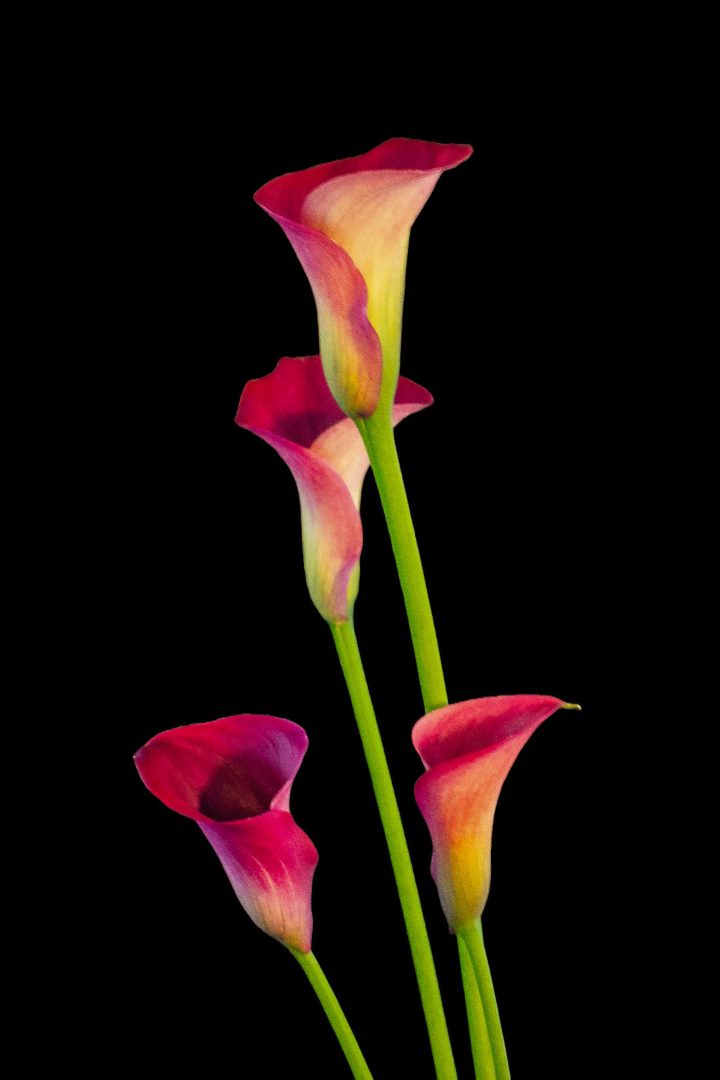Your cart is currently empty!
A Comprehensive Guide to Sunflowers and Calla Lilies: Unveiling Their Beauty and Versatility

1. Introduction
The vibrant hues and graceful forms of sunflowers and calla lilies have captured the hearts of gardeners and flower enthusiasts for centuries. These captivating blooms add a touch of elegance and summery charm to any space. Whether you’re an avid gardener or simply appreciate the beauty of nature, understanding these magnificent plants will enhance your enjoyment and enable you to create breathtaking floral arrangements.
2. Sunflowers: Radiance and Resilience
2.1 Cultivars and Characteristics
Sunflowers belong to the genus Helianthus and are native to North America. They exhibit a wide range of sizes, from petite varieties standing a few inches tall to towering giants reaching over 12 feet. Their iconic blooms consist of a central disc surrounded by a halo of colorful ray florets. Sunflowers come in an array of hues, including yellow, orange, red, and purple.
2.2 Growing Conditions
Sunflowers thrive in full sun and well-drained soil. They require ample moisture, especially during the initial growth stages. Avoid overwatering, as this can lead to root rot. Fertilize regularly to promote healthy growth and abundant blooms.
2.3 Uses
Sunflowers serve multiple purposes beyond their aesthetic value. Their seeds are a nutritious source of vitamins, minerals, and antioxidants. The oil extracted from these seeds is used in cooking, cosmetics, and biofuels. Sunflowers also attract pollinators, making them beneficial for gardens and the environment.
3. Calla Lilies: Elegance and Symbolism
3.1 Varieties and Features
Calla lilies belong to the genus Zantedeschia and are native to southern Africa. Known for their trumpet-shaped flowers, calla lilies come in various colors, including white, yellow, pink, and purple. Their elegant blooms are often solitary, rising from long stems. Calla lilies symbolize purity, innocence, and beauty.
3.2 Growing Conditions
Calla lilies thrive in boggy areas or consistently moist soil. They prefer bright indirect light or partial shade. Mulch around the plants to retain moisture and suppress weeds. Avoid overwatering during the summer months to prevent root rot.
3.3 Toxicity
It’s important to note that calla lilies are toxic if ingested, both to humans and pets. The plant contains calcium oxalate crystals, which can cause irritation to the mouth, throat, and gastrointestinal tract.
4. Comparison of Sunflowers and Calla Lilies
While both sunflowers and calla lilies are stunning flowers, they have distinct characteristics:
| Feature | Sunflower | Calla Lily |
|—|—|—|
| Height | 12 inches to over 12 feet | 1 to 3 feet |
| Bloom shape | Sunflower head with central disc and ray florets | Trumpet-shaped |
| Color range | Yellow, orange, red, purple | White, yellow, pink, purple |
| Growing conditions | Full sun, well-drained soil | Boggy areas or consistently moist soil |
| Toxicity | Non-toxic | Toxic if ingested |
| Uses | Ornamental, seeds for food, oil extraction | Ornamental, cut flowers |
5. Floral Arrangements with Sunflowers and Calla Lilies
The vibrant hues and elegant forms of sunflowers and calla lilies make them ideal for creating eye-catching floral arrangements. Here are some tips:
– Pair sunflowers with complementary colors like blue delphiniums or purple salvia for a bold and cheerful display.
– Combine calla lilies with roses or lilies for a sophisticated and romantic arrangement.
– Add greenery like eucalyptus or ferns to balance the blooms and create depth.
– Experiment with different vase shapes and sizes to enhance the arrangement’s overall aesthetics.
– For a touch of whimsy, arrange sunflowers with daisies or zinnias.
6. Care and Maintenance
Proper care and maintenance will ensure your sunflowers and calla lilies thrive and produce beautiful blooms.
6.1 Deadheading
Deadhead spent blooms by removing them from the stem. This encourages new flower production and prevents the plant from putting energy into seed production.
6.2 Watering
Sunflowers require regular watering, especially during dry spells. Calla lilies prefer consistently moist soil, but avoid overwatering.
6.3 Fertilizing
Fertilize sunflowers every few weeks during the growing season. Calla lilies benefit from occasional fertilization, but avoid overfeeding.
6.4 Winter Protection
Sunflowers are annuals and will not survive winter in cold climates. Calla lilies are hardy in USDA hardiness zones 6-11. Protect them from frost by mulching heavily or digging up the bulbs and storing them indoors during the winter months.
7. Conclusion
Sunflowers and calla lilies are versatile and breathtaking flowers that enhance any garden or floral arrangement. By understanding their unique characteristics and providing proper care, you can enjoy the beauty and radiance of these captivating blooms for seasons to come. Whether you prefer the sun-worshipping sunflowers or the elegant calla lilies, their presence will add a touch of magic to your outdoor space.








Leave a Reply